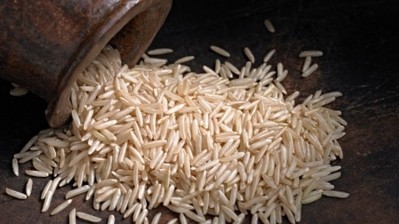India’s spice industry under fire: How can the authorities prevent another contamination scandal?

Carcinogenic ethylene oxide is a pesticide that has been found in spice powders from major Indian brands Everest and MDH, putting the country's spice industry under intense scrutiny.
This has led to bans in Hong Kong and the Maldives, product recalls in Singapore, and more possible bans with stricter checks on India’s spices in Australia and the US.
Despite the Food Safety and Standards Authority of India (FSSAI) emphasising its stringent regulations, overseas bans and domestic concerns have raised questions about the effectiveness of these measures. Experts weigh in on whether India is sending the right message about its commitment to food safety, and what can be done differently to prevent future contamination cases.
Should India have raised maximum residue limits for “certain pesticides” after overseas ban?
Following the Hong Kong ban on 5 April, FSSAI issued a statement on 8 April that raised the maximum residue limits (MRL) of pesticides by 10 times from 0.01mg/kg to 0.1mg/kg. Although FSSAI clarified that these only applies to pesticides not registered with the Indian authorities, and that the international Codex standards were adhered to, it sparked criticism and confusion.
Tech entrepreneur Ashwin Bhadri said that from a practical standpoint, issuing such a statement may be seen as a compromise between regulatory requirements and practical considerations. It could be argued that setting a higher MRL for unregistered pesticides acknowledges the reality of pesticide use while still attempting to establish some level of control. However, this approach may be controversial and could lead to debates about the prioritisation of public health versus industry interests. It highlights the complex balancing act that regulatory bodies like the FSSAI often face in trying to address various stakeholders' concerns while ensuring food safety standards are met.
“It does seem counterintuitive for the FSSAI to increase the MRL for pesticides not registered with authorities, especially considering the potential health implications. Activists, scientists, and the public may indeed have valid concerns about this increase, as it could raise questions about food safety standards and the protection of public health. The implications of such a decision could be significant, as it may lead to increased pesticide residues in food products, potentially impacting consumer health in the long term. It may also raise doubts about the effectiveness of regulatory measures in ensuring food safety and quality,” said Bhadri, who is also CEO of Equinox Lab, one of India's leading food, water and air testing laboratory and Asia's largest food safety auditing company.
When asked about the reason behind the MRL increase, and whether FSSAI's clarification is enough to assuage the public's fears, former FSSAI director Pradip Chakraborty told FoodNavigator-Asia that the increase is only applicable to exported food products.
“Public apprehension cannot be reduced because it is human nature to be afraid when contamination cases such as this occur. Furthermore, only domestic and imported food products are within the purview of the FSSAI. Exported food products shall confirm the specifications of the importing countries,” said Chakraborty, who also said that the statement about the MRL increase should not have come from FSSAI, but from the regulatory bodies that deal with exports, such as the Spices Board of India and the Export Inspection Council.
Who should be held accountable for food safety lapses?
Chakraborty, who is currently senior advisor at India’s Centre for Public Health and Food Safety (CPHFS), took a similar stance when asked about what should be done to address the recent spice powder contamination case.
“Ethylene oxide is prohibited by the FSSAI in alignment with the European Food Safety Authority. Intentionally or unintentionally, the brands have added ethylene oxide to the spice powders so they have to take responsibility for this. There’s no mistake in FSSAI standards.”
He explained that while manufacturers obtain licences from the FSSAI, exports are handled by the Board of Spices and the Export Inspection Council. FSSAI is only mandated to handle imported and domestic products.
But because there is a provision for export-oriented businesses to sell 20% of their goods to the domestic tariff area, there is a need to check whether those sold within India contains ethylene oxide.
In a live interview session that was conducted by India 360 News in Hindi, Mahesh Zagade, former FDA commissioner, took issue with Chakraborty’s views.
“Whatever food we have for local consumption or export, it is regulated by the food commissioner of the state, or by the person who gives the licence. These regulators have control of whatever happens thereafter. If he [Chakraborty] says that ‘we have made the regulations and therefore our responsibility ends here’, then we will always have this problem with food safety. Are FSSAI and the Food Safety Commissioner just collecting salary and not doing anything about it? When something like this happens, they become reactive. There is no place for being reactive in the law. They should create an ecosystem where no one should deviate even an inch from the standards that have been set.
“The regulations are strict, but if there is no implementation, it will continue like this. Not only do the authorities need to take action against the manufacturers. The safety officer who gave the licence should also be held accountable. This should be raised in parliament, with a clear agenda on what needs to be done. Otherwise, this issue will come up again and again. Today it could be spices, but the next day it could be in other types of food. The implications are serious. We could be faced with diseases like cancer, kidney failure, and heart disease. A big threat is upon the country.”
What kind of approach should be taken when handling food safety lapses?
When speaking to FoodNavigator-Asia, Bhadri similarly said that preventing contamination incidents requires a comprehensive approach. This includes implementing good manufacturing practices (GMP) and hygiene protocols in processing facilities, maintaining proper storage conditions to prevent microbial growth, conducting regular quality checks and testing, and providing training and education to stakeholders involved in the spice supply chain.
“Stricter regulations and better enforcement are essential for ensuring food safety. This includes robust monitoring of food production facilities, stringent testing requirements, regular audits, and swift action in case of non-compliance. Collaboration between regulatory agencies, industry stakeholders and testing laboratories is key to achieving higher standards of food safety.”
Similarly, Chakraborty explained that FSSAI guidelines require food safety officers to visit manufacturing sites at regular intervals.
"The Food safety act is a self-compliance act. We have a food safety audit agency which is supposed to audit food processing units regularly. Moreover, according to standard practice, ingredients, intermediate products and the finished products are to be tested from each batch. If this process had been followed, this problem would never have occurred.”
Additionally, Chakraborty acknowledged that the FSSAI should have taken a proactive approach instead of a reactive one.
“The authorities only jumped into action when something happens. The FSSAI should have taken a proactive role. Then, all of this could have been avoided at the initial stage.”














